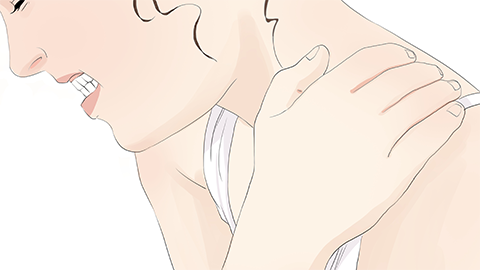What is the fastest and best way to treat shoulder periarthritis?
Generally speaking, there is no such thing as the "fastest and best way to treat shoulder periarthritis." The main treatment methods for shoulder periarthritis include general management, physical therapy, medication, traditional Chinese medicine (TCM), and rehabilitation exercises. A detailed analysis is as follows:
1. General Management
Patients should keep their shoulders warm and avoid cold exposure, which may worsen muscle spasms and increase pain. Daily activities that place excessive strain on the shoulder should be reduced, and maintaining the same posture for prolonged periods should be avoided to prevent continuous tension in shoulder muscles. Additionally, patients should regulate their daily routines, ensure sufficient sleep, and maintain good overall physical condition to support tissue repair and reduce inflammatory responses.

2. Physical Therapy
Physical therapy improves blood circulation in the shoulder area through specific techniques and helps reduce inflammation. Commonly used methods include ultrasound therapy and heat application. Ultrasound therapy uses sound wave energy to penetrate deep into shoulder tissues, promoting local blood flow, relieving muscle adhesions, and reducing pain. Heat therapy helps relax shoulder muscles, dilate blood vessels, accelerate the absorption of inflammatory substances, and improve restricted shoulder movement.
3. Medication
Medication is a common approach to relieve pain and control inflammation in shoulder periarthritis. Patients may use medications such as ibuprofen sustained-release capsules, diclofenac sodium enteric-coated tablets, or etoricoxib tablets under medical guidance. These drugs help suppress inflammatory reactions and reduce shoulder pain, enabling patients to better engage in subsequent rehabilitation exercises.
4. Traditional Chinese Medicine (TCM)
According to TCM theory, shoulder periarthritis is associated with stagnation of qi and blood and blocked meridians. Treatment often involves using herbal medicines that promote blood circulation, remove blood stasis, unblock meridians, and relieve pain—such as Huoxue Zhitong Capsules and Shujin Huoxue Tablets. Massage and tuina therapy can stimulate acupoints and muscles in the shoulder area through manual techniques, helping to unblock meridians, relieve muscle tension, improve circulation of qi and blood, and reduce pain and movement limitations. Moxibustion applies thermal stimulation to acupoints, warming and unblocking the meridians, enhancing blood circulation in the shoulder, and aiding in the resolution of inflammation.
5. Rehabilitation Exercises
Rehabilitation exercises aim to improve shoulder joint mobility and strengthen shoulder muscles through specific movements. Commonly used exercises include pendulum exercises and wall-climbing exercises. Pendulum exercises involve natural swinging motions of the shoulder to relax muscles and enhance joint flexibility. Wall-climbing exercises gradually expand the range of shoulder motion, stretch shoulder muscles and ligaments, prevent worsening joint adhesions, and promote functional recovery.
In addition, during treatment, patients should consistently follow medical advice regarding both therapy and exercise, and have regular follow-up evaluations to monitor shoulder recovery. If symptoms such as increased shoulder pain or severely restricted movement occur during treatment, prompt medical consultation is necessary to adjust the treatment plan.




